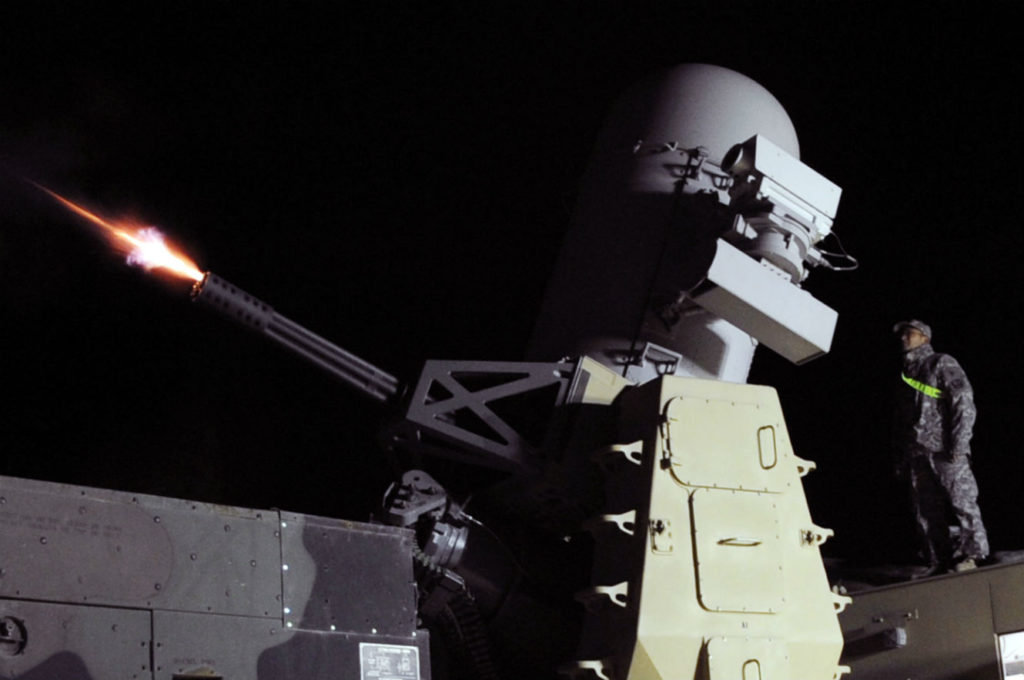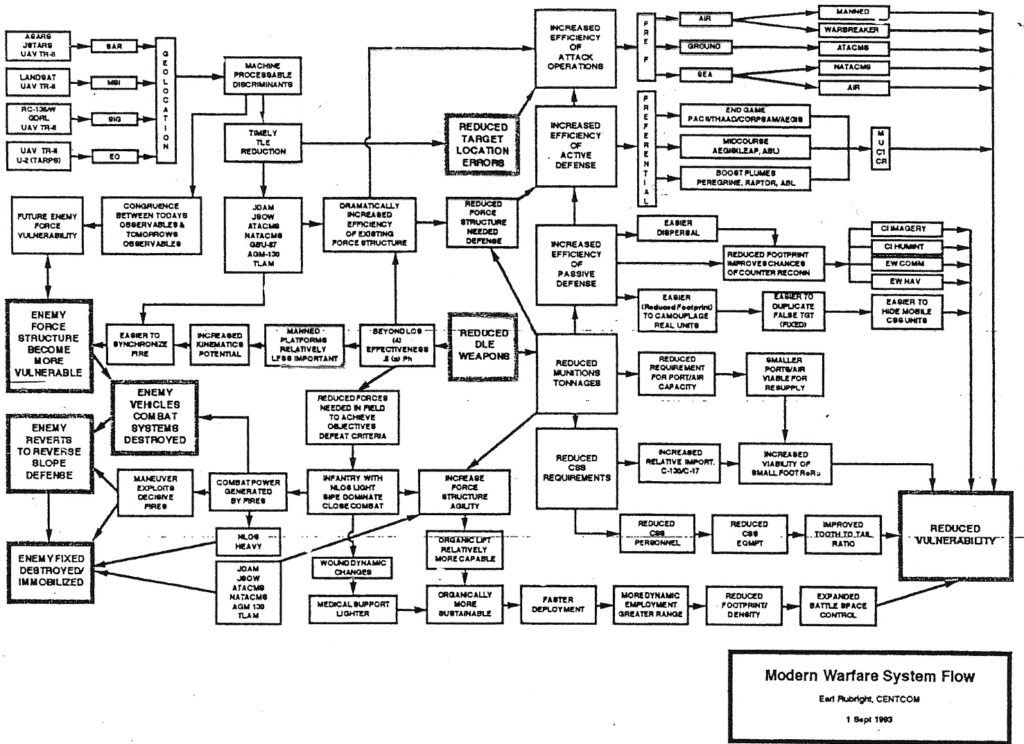Note to Futurists: The Maximum Effective Range of a Prediction is 20 Years

Earlier this summer, I wrote about an Army Unified Quest wargame that looked at the operating environment in 2050. Since then, I have noticed some additional speculation about how the Army should prepare for 2050 in outlets such as Small Wars Journal. After thinking some more about such prognostication and the risks of developing programs based on future visions, I propose a working hypothesis for others to consider: The maximum effective range of any future prediction is 20 years or less, and any viable warfighting concepts will be supported by developed or emerging technology rather than some figment of someone’s imagination.
To illustrate my argument, I turn to an example from history: In January 1974, Maj. Gen. Donn Starry wandered the battlefields of the recently ended Yom Kippur War. His papers at the U.S. Army Heritage and Education Center include a copy of the since declassified report he compiled from that visit. The three main conclusions of his report were that it was possible to fight outnumbered and win, the lethality of modern weaponry had vastly increased, and the tank remained the dominant land weapon system. These observations drove a complete revision in the way U.S. Army would fight that eventually culminated in AirLand Battle and contributed to the development of the “Big 5” weapons systems that still serve in the Army today — the Abrams tank, Bradley fighting vehicle, Blackhawk and Apache helicopters, and the Patriot missile. These comprised a “system of systems” that made AirLand Battle possible, and all were already somewhere in the procurement process as that conceptual ferment was ongoing.
Overseeing these intellectual and technological changes was the newly established Training and Doctrine Command of Gen. William E. DuPuy. Initially, the Army got the warfighting concept wrong. Active Defense, the doctrine that appeared in 1976, abandoned the traditional focus on forms of maneuver and concentrated on “winning the first battle” with new defensive weaponry like wire-guided anti-tank missiles. I came into the Army under that doctrine, and I remember practicing it fighting a Dunn-Kempf wargame at my officer advanced course in the late 1970s. I commanded a combined arms battalion task force that successfully decimated a Soviet motorized rifle regiment. Yet we took heavy casualties, and when the enemy’s second echelon force approached, our only option was to call in the nukes.
Though the concept he developed was fatally flawed, DuPuy fostered an intellectual process that would replace Active Defense with AirLand Battle by 1982. The merging of the new warfighting concept with new training programs and new technology produced the powerful force that overwhelmed the perfect enemy, an inept Soviet clone, in Desert Storm in 1991. The whole world took notice, and discussions in defense circles pondered whether we had witnessed a true revolution in military affairs (RMA) or just a military technological revolution.
In hindsight, this was the time for a course correction, but instead the Army continued on its vector of expecting great results from conventional high technology. After Desert Storm and the end of the Cold War, the Army abandoned AirLand battle to pursue the RMA with programs such as Force XXI and the Army After Next and mostly theoretical weapons like the Future Combat System. The 1993 Army operations manual was based upon a force with “near-perfect, near-real-time intelligence systems” and massed lethal effects with extremely deadly precision strike systems. Even the Defense Advanced Research Projects Agency got alarmed about some future projections, and briefings in their files at the U.S. Army Heritage and Education Center highlight dangerous “tales from technology dreamland” and “tales from systems dreamland.” That same year, I received a chart from Central Command entitled “Modern Warfare System Flow, that illustrated the war they were preparing to fight.
The diagram’s many boxes showed how modern technology would reduce our vulnerabilities, immobilize our enemies, and require very low ammunition expenditures as a result of precision systems. It depicted a quick and decisive war with few friendly casualties and total destruction of the enemy, almost without firing a shot. The shortcomings of such a view would not become clear until a decade later in Iraq, when what seemed like a quick and easy victory turned into a long and brutal counterinsurgency campaign. Just as George Patton would have been very comfortable leading forces during Desert Storm, Donn Starry would with today’s battlefields. The realities of combat have not changed, nor have technologies leapt ahead into the realm of science fiction.
As an air defense artillery officer, I spent one assignment with the Vulcan weapons system. Its explosive 20 millimeter shells make a truly impressive racket and a fearsome display, but we knew that while the rounds travel a considerable distance, the effective range was far less because of the aerodynamics and physics that caused the rounds to disperse as they traveled. I think that is a valid metaphor for future warfighting concepts. The ingredients that make up such visions also tend to diverge and disperse over time. Enemies adapt and new technologies emerge that necessitate rethinking. The example of what became known as Blitzkrieg also fits my model (although as a historian I hate that word). It was a new concept of warfare developed by the Germans after World War I that had maximum effect in World War II, but was then overshadowed by technological developments such as the atomic bomb and intellectual counters such as Mao’s people’s war. However, some aspects of Blitzkrieg still remain relevant today.
While it is prudent to look far ahead to think about future warfare, it is very risky to act upon such visions. As T.X. Hammes once told me, “There is a fine line between a vision and a hallucination.” Shaping an Army based on predictions too far in the future not only does not allow for course corrections responding to unexpected technologies or threat adaptation, but it also it risks building a force on the foundation of a hallucination.
The best way to get to 2050 is by bounds, a series of steps that allows periodic course corrections. With that in mind, the structure of the Unified Quest wargame I witnessed in May makes a lot of sense. While I was involved with the group looking at 2050, a larger contingent was dealing with scenarios in 2030. A 1994 briefing from General Gordon Sullivan’s papers aiming to shape the way ahead for Force XXI in 2010 concluded that missions and operations “will be a lot like today,” and basic equipment would be the same, though “product improved.” Advocates of the RMA after Desert Storm could not accurately foresee the impact of expanded connectivity or unmanned aerial systems, nor the effects of shifts to war amongst the people that complicates the use of any technology. Similarly, most aspects of warfighting in 2030 would be recognizable today, but new technologies and ideas will emerge then to shape the next bound in warfighting concepts out to 2050. It is worth speculating what possible trajectories for that bound will be without committing to them yet. And the need and capacity for periodic course corrections must always be part of any concept.
Conrad C. Crane is chief of historical services for the Army Heritage and Education Center at Carlisle Barracks and a former director of the U.S. Army Military History Institute. He is the author of the new book, Cassandra in Oz: Counterinsurgency and Future War (USNI).
Image: U.S. Air Force, Senior Airman Brittany Bateman

